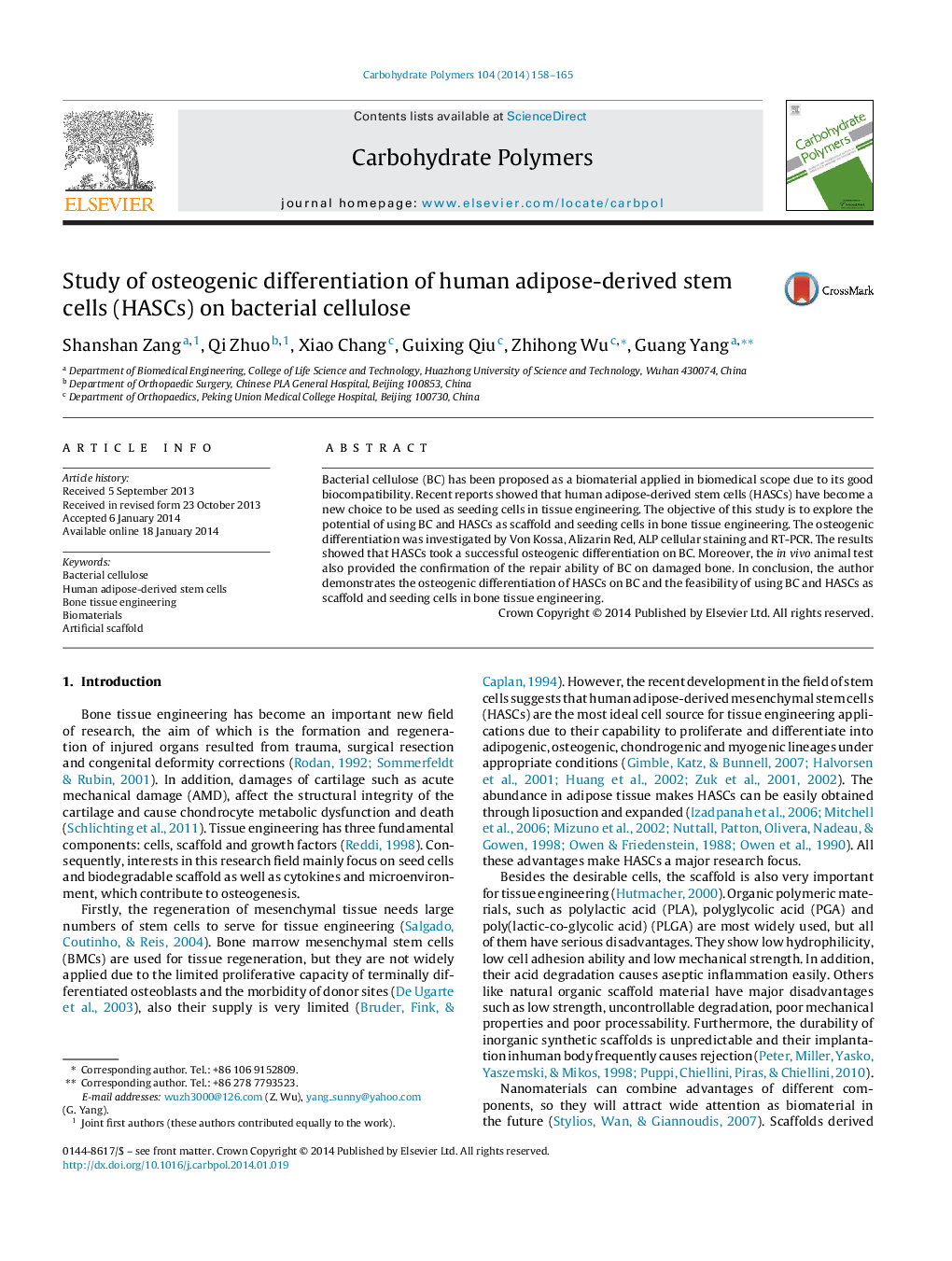| Article ID | Journal | Published Year | Pages | File Type |
|---|---|---|---|---|
| 1375821 | Carbohydrate Polymers | 2014 | 8 Pages |
•BC has exhibited excellent biocompatibility being a substitution of artificial tissue.•HASCs have the ability to proliferate and to differentiate into osteogenic lineages under appropriate conditions.•It is demonstrated the feasibility of using BC and HASCs as scaffold and seeding cells in bone tissue engineering.
Bacterial cellulose (BC) has been proposed as a biomaterial applied in biomedical scope due to its good biocompatibility. Recent reports showed that human adipose-derived stem cells (HASCs) have become a new choice to be used as seeding cells in tissue engineering. The objective of this study is to explore the potential of using BC and HASCs as scaffold and seeding cells in bone tissue engineering. The osteogenic differentiation was investigated by Von Kossa, Alizarin Red, ALP cellular staining and RT-PCR. The results showed that HASCs took a successful osteogenic differentiation on BC. Moreover, the in vivo animal test also provided the confirmation of the repair ability of BC on damaged bone. In conclusion, the author demonstrates the osteogenic differentiation of HASCs on BC and the feasibility of using BC and HASCs as scaffold and seeding cells in bone tissue engineering.
